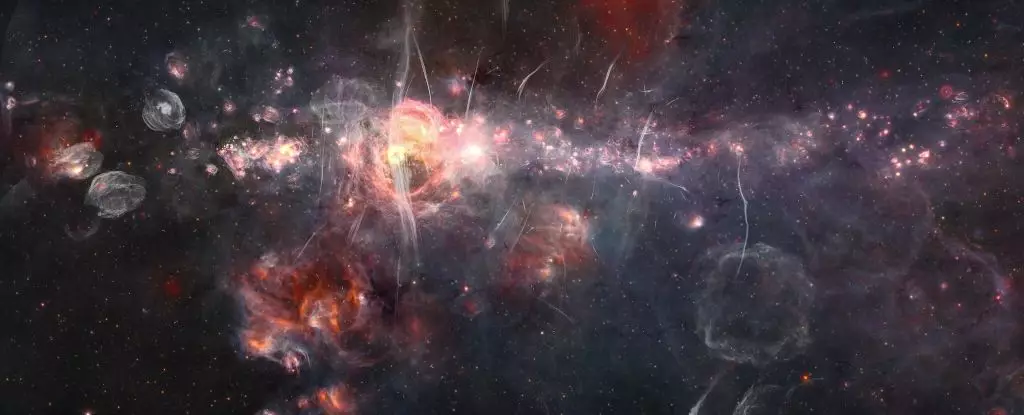At the heart of our Milky Way galaxy lies a supermassive black hole, Sagittarius A*, which, despite its immense gravitational pull, presents a relatively serene facade. But just beneath this calm veneer, the galactic center is anything but tranquil. Recent discoveries have illuminated a particularly chaotic area in this cosmic playground, showcasing phenomena that defy simplicity. Among these phenomena is a remarkable source of high-energy gamma rays known as HAWC J1746-2856, discovered by the High-Altitude Water Cherenkov (HAWC) observatory in Mexico. The enigmatic emissions from this source prompt a multitude of questions regarding the extreme physical processes occurring near the center of our galaxy.
Gamma Rays and PeVatrons: A New Era of Exploration
HAWC J1746-2856 has garnered attention for emitting some of the highest-energy gamma rays ever detected. Over the course of seven fruitful years, HAWC recorded a striking 98 gamma-ray events, all surpassing 100 teraelectronvolts (TeV). The implications of this finding are profound, suggesting that the region is harboring a potent cosmic accelerator, colloquially referred to as a PeVatron. PeVatrons are unique entities capable of accelerating cosmic rays—mainly charged protons and atomic nuclei—to staggering speeds, approaching that of light. While such high-energy accelerators are theorized to exist in various astrophysical environments, including supernova remnants and regions surrounding black holes, their actual identification has proven to be elusive.
Pat Harding, a prominent physicist from Los Alamos National Laboratory, underscores the significance of this discovery, stating that it provides unprecedented insight into the galactic center’s energy dynamics. The identification of a PeVatron at HAWC J1746-2856 fundamentally alters our understanding of cosmic ray interactions and their sources. Yet, the exact nature of this source continues to elude researchers. Among the contenders for the origins of the observed gamma rays are the supermassive black hole itself and HESS J1746-285, an unidentified gamma-ray emitter in close proximity to a feature known as the Radio Arc. The absence of known supernova remnants in this region further complicates the task of pinpointing the source of these remarkable emissions.
The mechanics behind cosmic ray acceleration are intricate. When these ultra-energetic particles collide with other cosmic materials—such as magnetic fields or dust clouds—the energy they carry can be transformed into gamma radiation. This radiation, however, is restricted by the Earth’s atmosphere; it cannot penetrate far without interacting with atmospheric molecules. This limitation led to the development of underground Cherenkov detectors, like HAWC, which can capture the lower-energy particles created by the showers of gamma rays.
Through their intricate analysis, physicists working with HAWC data from over two and a half years have managed to reconstruct the paths taken by these gamma rays, providing a clearer view of their celestial origins. Notably, HAWC’s heightened sensitivity to teraelectronvolt energies has enabled groundbreaking discoveries, including the detection of TeV gamma rays emanating from our very own Sun.
Expanding the Cosmic Picture
The broader implications of HAWC J1746-2856’s high-energy emissions are significant. Observational data suggests that the density of cosmic rays in the galactic center is greater than the average across the galaxy. This could indicate a prolific source of accelerated protons in the vicinity, hinting at events or structures contributing to this energetic backdrop. While key insights have been gained from current observations, deciphering the precise mechanisms at play will likely necessitate the advent of next-generation Cherenkov detectors, capable of offering finer resolutions and more extensive data collections.
The discovery of HAWC J1746-2856 serves as a reminder of the thrilling complexity that pervades our universe. With new technologies and continued research, we may soon unravel not only the mysteries of this specific cosmic accelerator but also gain a deeper understanding of the high-energy landscape surrounding our galactic center. Such discoveries not only expand our cosmic knowledge but also reinforce the notion that the universe still holds countless enigmas, waiting for inquisitive minds to uncover their truths.


Leave a Reply